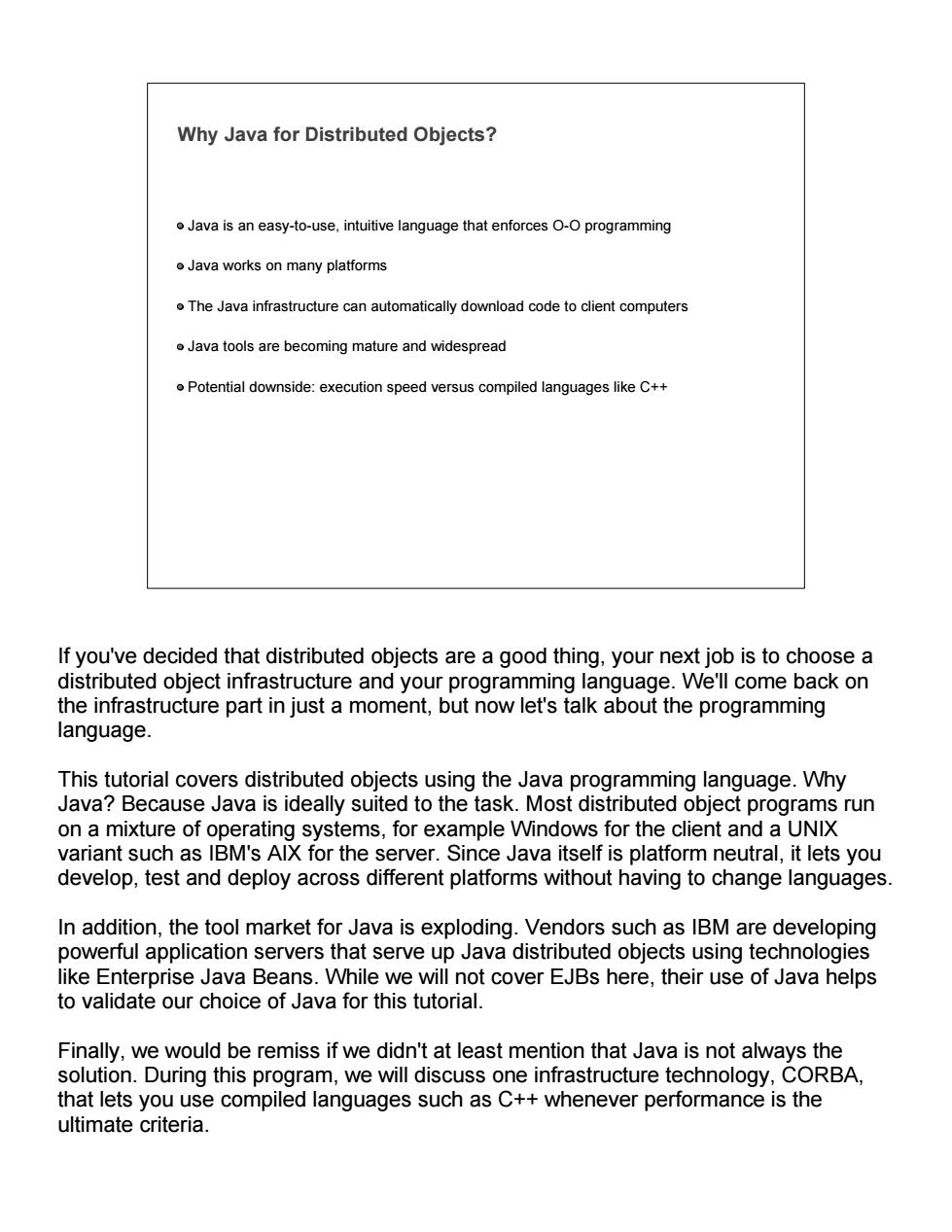正在加载图片...

Why Java for Distributed Objects? Java is an easy-to-use,intuitive language that enforces O-O programming Java works on many platforms .The Java infrastructure can automatically download code to client computers Java tools are becoming mature and widespread .Potential downside:execution speed versus compiled languages like C++ If you've decided that distributed objects are a good thing,your next job is to choose a distributed object infrastructure and your programming language.We'll come back on the infrastructure part in just a moment,but now let's talk about the programming language. This tutorial covers distributed objects using the Java programming language.Why Java?Because Java is ideally suited to the task.Most distributed object programs run on a mixture of operating systems,for example Windows for the client and a UNIX variant such as IBM's AIX for the server.Since Java itself is platform neutral,it lets you develop,test and deploy across different platforms without having to change languages In addition,the tool market for Java is exploding.Vendors such as IBM are developing powerful application servers that serve up Java distributed objects using technologies like Enterprise Java Beans.While we will not cover EJBs here,their use of Java helps to validate our choice of Java for this tutorial. Finally,we would be remiss if we didn't at least mention that Java is not always the solution.During this program,we will discuss one infrastructure technology,CORBA, that lets you use compiled languages such as C++whenever performance is the ultimate criteria.Why Java for Distributed Objects? Java is an easy-to-use, intuitive language that enforces O-O programming Java works on many platforms The Java infrastructure can automatically download code to client computers Java tools are becoming mature and widespread Potential downside: execution speed versus compiled languages like C++ If you've decided that distributed objects are a good thing, your next job is to choose a distributed object infrastructure and your programming language. We'll come back on the infrastructure part in just a moment, but now let's talk about the programming language. This tutorial covers distributed objects using the Java programming language. Why Java? Because Java is ideally suited to the task. Most distributed object programs run on a mixture of operating systems, for example Windows for the client and a UNIX variant such as IBM's AIX for the server. Since Java itself is platform neutral, it lets you develop, test and deploy across different platforms without having to change languages. In addition, the tool market for Java is exploding. Vendors such as IBM are developing powerful application servers that serve up Java distributed objects using technologies like Enterprise Java Beans. While we will not cover EJBs here, their use of Java helps to validate our choice of Java for this tutorial. Finally, we would be remiss if we didn't at least mention that Java is not always the solution. During this program, we will discuss one infrastructure technology, CORBA, that lets you use compiled languages such as C++ whenever performance is the ultimate criteria